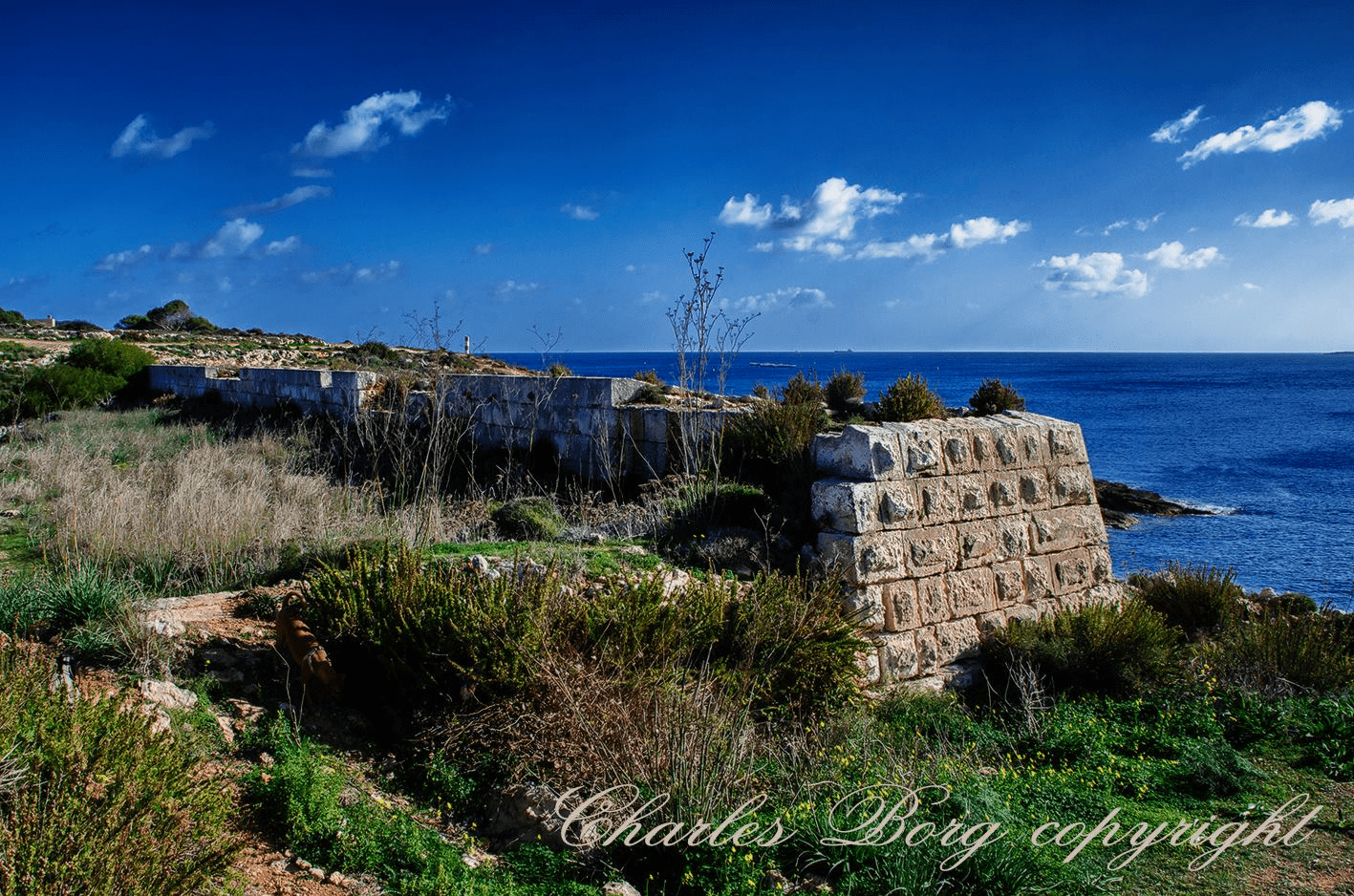Ta’ Qassisu
Ta’ Qassisu entrenchment is one of the surviving entrenchments that are found in Malta. In Mellieha there are two entrenchments, Ta Qassisu and Louvier entrenchments, the latter is found at Armier. Fortunately Ta Qassisu entrenchment still exists but needs to be restored because a number of masonry was pulled down by vandals. Parts of the entrenchments are low while other parts are high. This is because not all the land is of the same level.
Ta’ Qassisu entrenchment is found at the left side of Mellieha Bay. It is near a hotel. Mellieha Bay was found by many powers that occupied the Maltese islands that was vulnerable to an invasion. The Hospitaller too knew of this danger. So, first in the mid-17th century they built Fort St. Agatha and with during the early 18th century the Hospitallers began investing in direct fortifications. Two coastal batteries and a coastal redoubt were built. The next fortification was to be the entrenchments.

So, the Hospitallers agreed with Bourlamaque proposals and began building Ta’ Qassisu entrenchment. This entrenchment was part of a much larger scheme that is surrounding the Maltese island with entrenchments. In Mellieha, the areas between Mellieha Bay continuing up to at least Marfa were to be surrounded with entrenchments. Unfortunately for the Hospitallers only a small part of the Mellieha Bay entrenchments were built, because they did not have enough money to build all these entrenchments. 1
References:
1 Stephen Spiteri. Fortresses of the Cross: Hospitaller Military Architecture (1136-1798), A Heritage Interpretation Services Publication, Malta, 1994, p 569